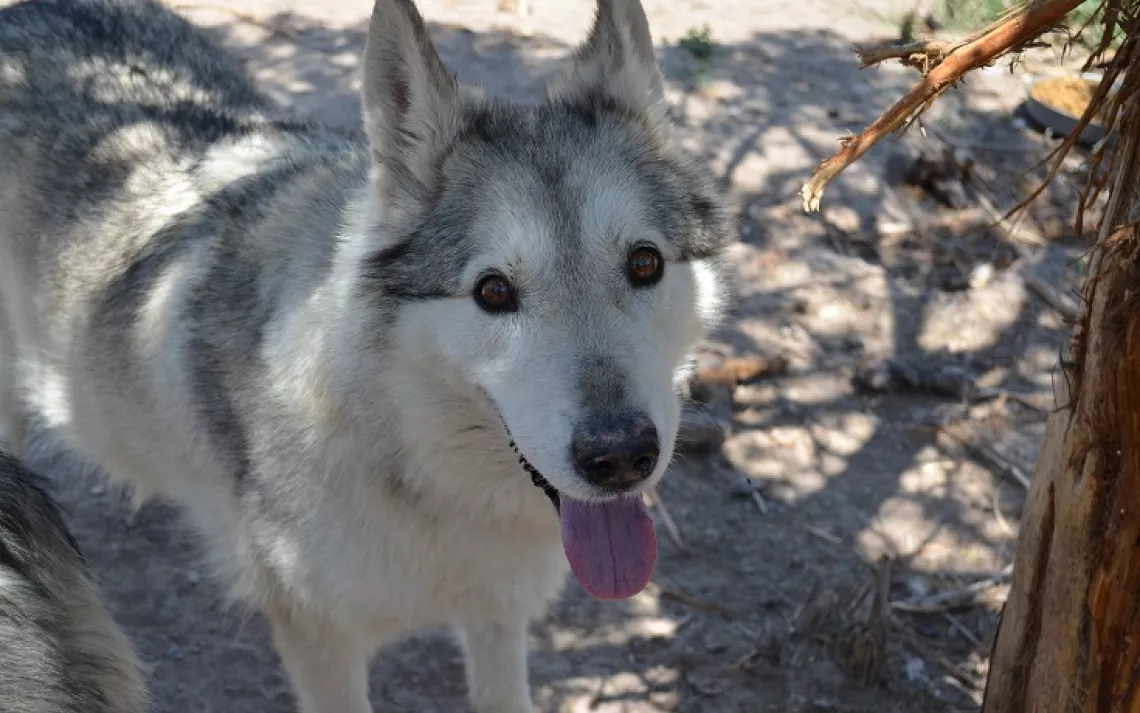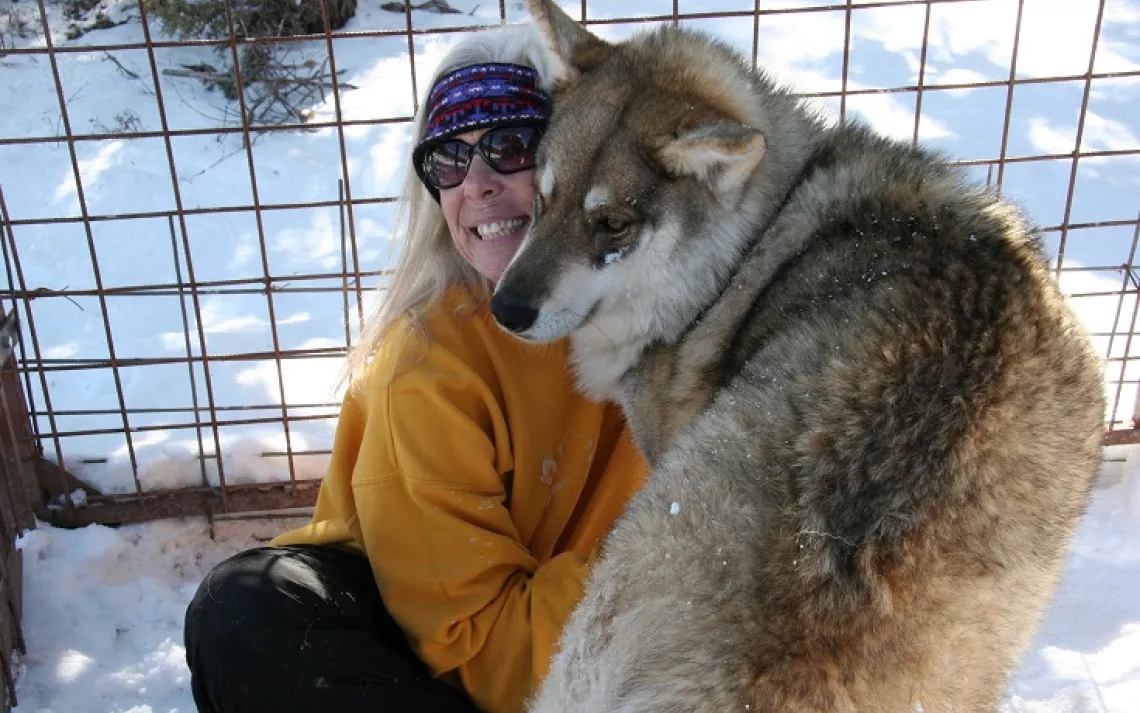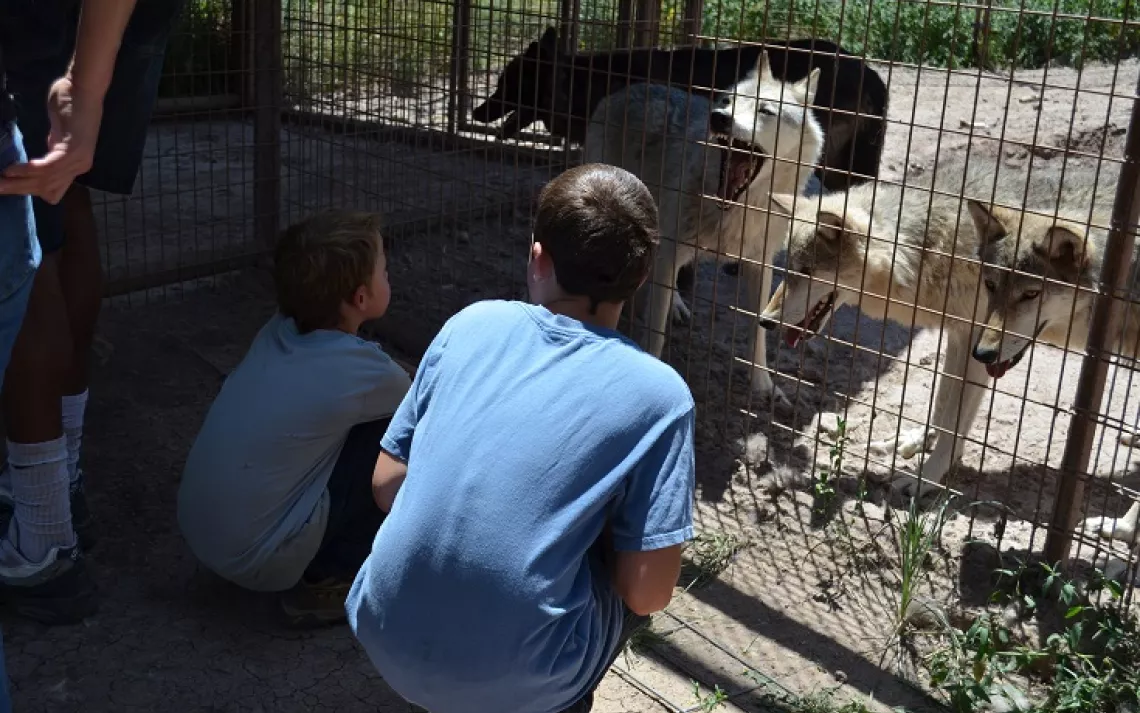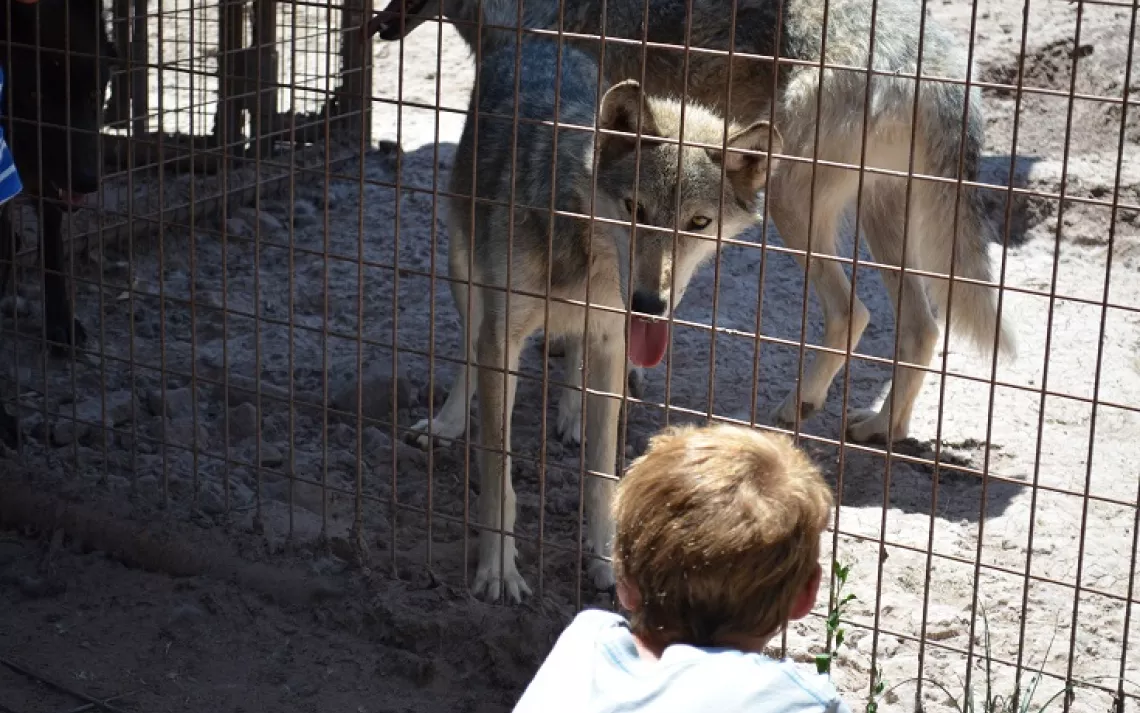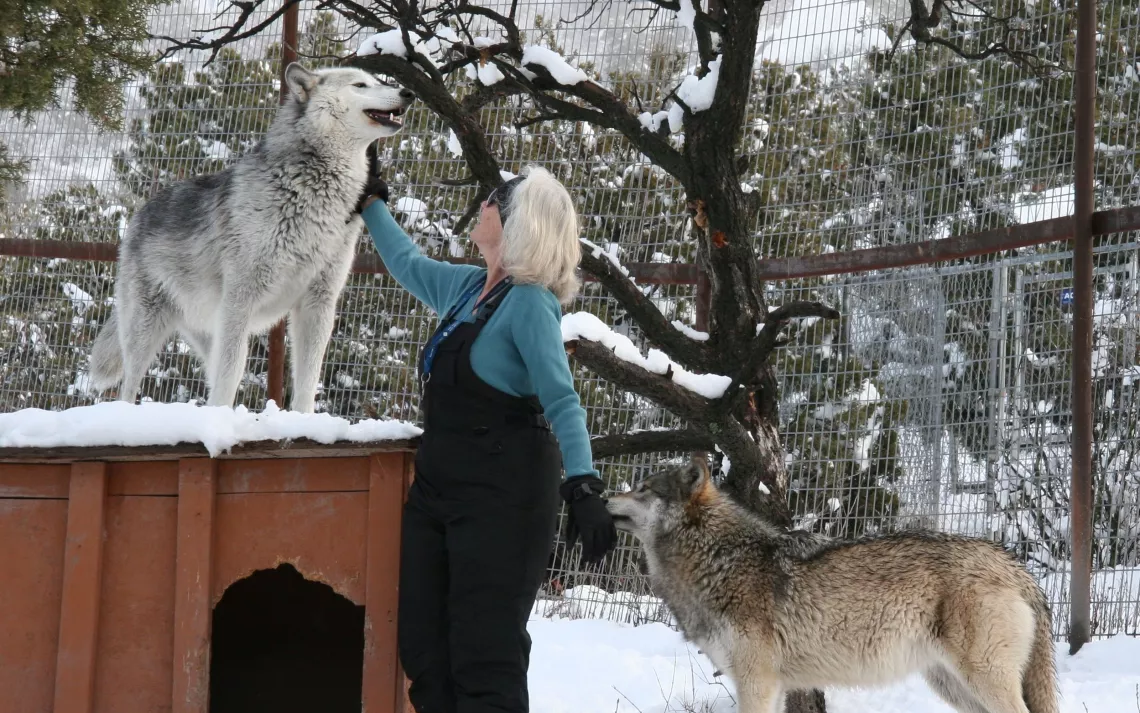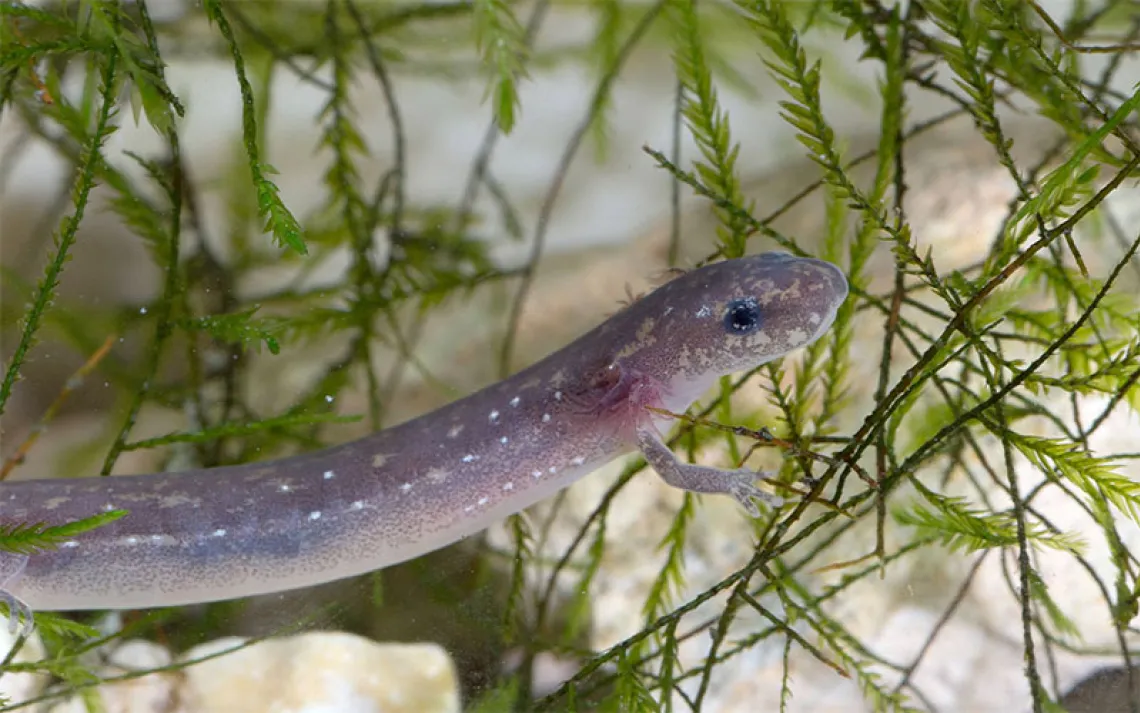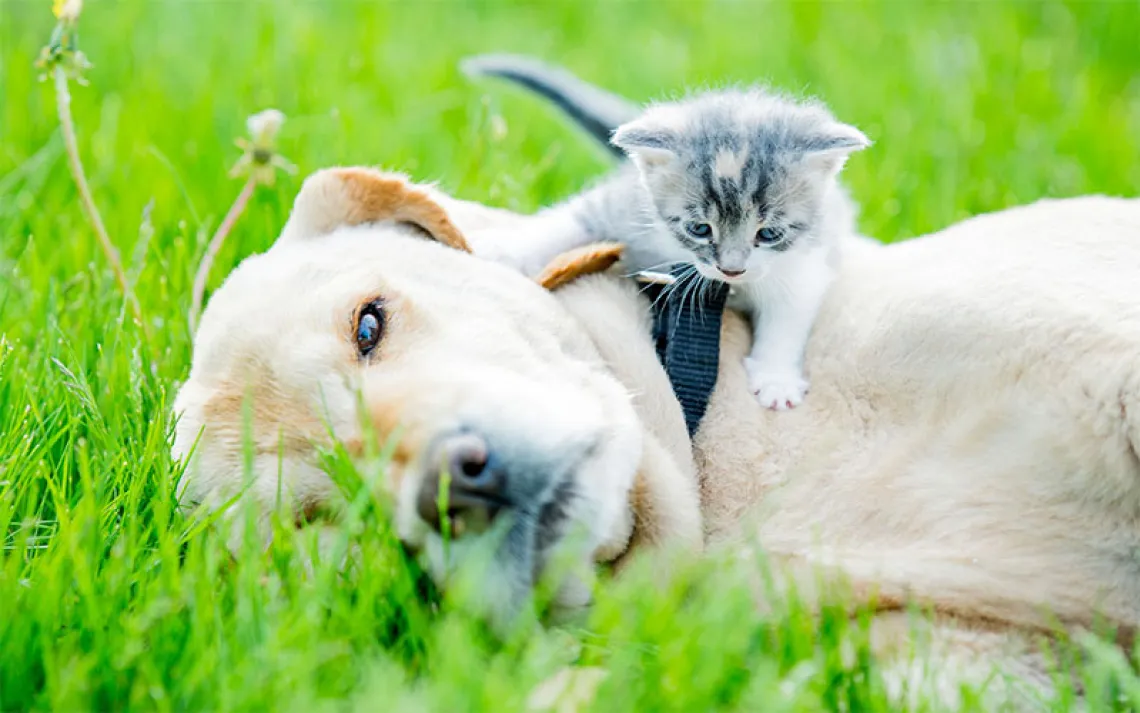Born to Be Wild
Twenty years ago, Paula Watson walked into an animal shelter planning to adopt a Labrador retriever. Instead, she found herself stopped in front of a cage that held the largest canine she'd ever seen: a wolf-dog cross named Winslow. He calmly locked eyes with her, and Watson found herself bewitched. Watson asked to walk him, and shelter staff warned her that the “monster” hadn’t been let out in over a week because he was so strong and unpredictable. But when she took hold of Winslow’s leash, he didn’t bolt—he leaned into her. Watson learned that he was scheduled for euthanasia in two days.
Of course, she didn’t go home with a Lab.
Winslow was the first of hundreds of wolves and wolf-dogs Watson has saved through her nonprofit Wolfwood Refuge. Founded in 1996, the Southwest Colorado sanctuary rescues and rehabilitates the animals, who have almost always suffered abuse by owners who couldn’t control them as pets. “People get them because they’re wild and amazing, and then when they’re wild and amazing, people get mad,” she says. “There are tremendous levels of abuse.”

Watson leads homeschooled children on a tour. | Photo by Jen Reeder
Watson ticks off stories of mistreatment that her animals have faced: A wolf named Cassidy was kept chained to five other wolves in a meth house, where they were tossed unopened cans of refried beans as meals. Akayla needed casts on her front legs for six months. Rufio had been starved. Ghost was so traumatized when he came to Wolfwood that he wouldn’t let anyone touch him for nine months. Jill and Kodiak had spent their lives in crates stacked in a warehouse with over 100 other animals. Many wolves and wolf-dogs have arrived with ruptured spleens or head injuries from being kicked.
Watson welcomes them all. There are currently 59 wolves and wolf-dogs at Wolfwood Refuge, and they all have heartbreaking stories. But now they’ve been medically treated and socialized and are housed in large outdoor enclosures with other wolves (or the occasional nurturing dog) depending on their needs and temperament.
Watson, a feisty 61-year-old, channels her anger at the former abuse of her wards by spreading a simple message: Exotic animals don’t make good pets. Educating people about wolves is another important part of the former school teacher’s mission at Wolfwood. To that end, tours of Wolfwood are free to the public; over 50 groups visit each year. Watson also holds seminars on the subject at schools and libraries. She fervently believes that interacting with wolves and wolf-dogs helps visitors—particularly children—learn that wolves aren’t the vicious man-killers portrayed in the film The Grey. But it also helps them understand that wolves aren’t cute Disney characters either, and that they need to remain in the wild. “Kids need to learn to respect other species and to respect nature,” she says. “They’re going to run the world someday.”
To help cultivate respect for the wild instincts of the wolves and wolf-dogs, Watson briefs visitors thoroughly about safety measures, from emptying pockets of food, gum, and Chapstick to removing earrings and exposed body piercings. Before ushering anyone into an enclosure to pet the most socialized “ambassador wolves,” she cautions to approach without hesitancy, and never extend a fist, which can trigger a response to perceived abuse.
“Wolves treat people like wolves—they’re extremely physical with each other, so they’re extremely physical with us,” as she explained to a recent tour group. “Roz fractured my hand just playing with me once.”
These educational efforts are particularly critical for increasing awareness of the plight of wolf-dogs. While wolves are classified as wildlife, the state of Colorado considers them domestic animals if crossed with a dog. But wolf-dogs have varying percentages of wolf in them—and breeders can be unscrupulous—which makes them unpredictable as pets. Even a seemingly tame animal with a lower percentage of wolf in its makeup, such as Wolfwood’s ambassador wolf-dog Trinity, doesn’t make a good pet since their wild instincts can kick in at any time. “You couldn’t take her to a park,” notes Watson. “She’d kill a cat in a second.”
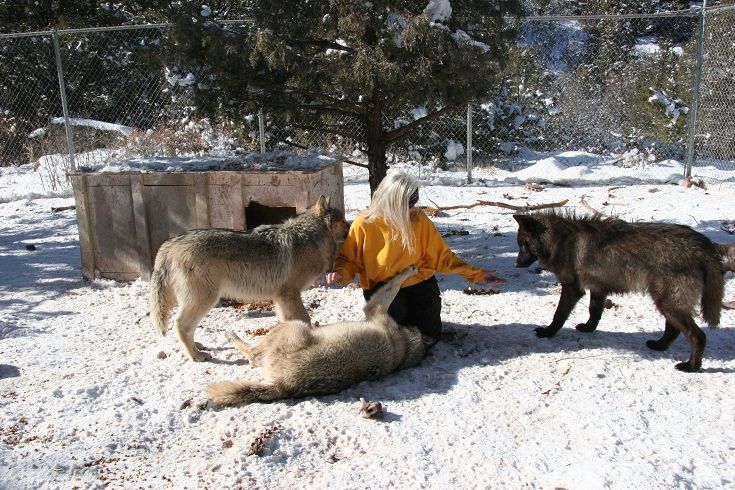
Watson interacts and socializes with Kewo, Oakley, and Bruja. | Photo by Joan Fassett
Watson staunchly opposes cross-breeding wolves and dogs, and supports responsible reintroduction of wolves to wild places—she cites the release in Yellowstone National Park as an ideal model. But the thrust of her focus is Wolfwood Refuge, an undertaking that requires enormous effort since it is completely run by Watson, her husband Craig (a coal miner by trade), and volunteers.
While some tasks need to happen daily, like filling water buckets, administering medications, and taking a head count, there’s no typical day at Wolfwood. For example, when the sanctuary received a large donation of frozen meat, volunteers had to hack into it with pickaxes before feeding it to the animals.
“It looked like a murder scene because there was blood all over the snow. We had to wear safety glasses because chips were flying everywhere,” Watson recalls with a laugh. “When they signed up to volunteer, I’m fairly certain they didn’t think, ‘Oh, I’ll be breaking up 40-pound chunks of meat with a pickaxe.’ But that’s what had to happen that day.”
Fortunately, Wolfwood is a labor of love.
“There’s nothing more beautiful than a wolf running in the snow. Wolves are to land what dolphins are to water,” Watson says. “This definitely takes everything you have. You can’t have a second ‘hobby.’ It’s hard to take a vacation or a day off. We didn’t have running water for 10 years. . . . It’s stupidly hard. But not everyone gets to live their passion, and I do.”
 The Magazine of The Sierra Club
The Magazine of The Sierra Club
